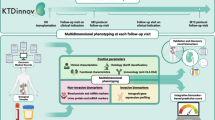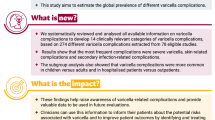Abstract
Background
More than 1.5 million tissue allografts are transplanted annually in the U.S. As part of the federal effort to improve tissue safety, FDA’s May 2005 Current Good Tissue Practices (CGTP) Rule requires tissue establishments to report to FDA serious infectious adverse events following allograft transplantation. To provide baseline data, we summarize reports of such infections received by FDA prior to the CGTP Rule.
Methods
We reviewed reports received by FDA’s MedWatch adverse event reporting system during 2001–2004. Our case definition was a reported infection in a human tissue transplant recipient within 1 year of transplantation. We examined demographics, tissue type, clinical outcomes and interventions, infectious organism(s), time from transplant to infection and reporter characteristics.
Results
We identified 83 reports of infections following allograft transplantations. Median patient age was 40 years (range: 1 month–87 years). The allografts included heart valves (42%), tendons (33%), bones (8%), blood vessels (6%), ocular tissues (5%), and skin (4%). Commonly reported outcomes and interventions were hospitalization (72%), antibiotic therapy (46%) and graft removal (42%). Nine of 11 patients who expired had received heart valves. In 65 reports that identified suspected organisms, bacteria were most common (42), followed by fungi (25) and prions (1). The median time from transplant to infection was 5.5 weeks (range: 3 days–52 weeks). Tissue manufacturers submitted 26% of reports. Among the remaining 74%, the reporters were quality assurance staff, infection control or risk management personnel (45%); physicians (15%); consumers (15%); nurses (13%); and surgical staff (12%).
Conclusion
This is the first review of reports to FDA for infections following allograft tissue transplantations. Infections led to serious outcomes and involved many tissue types. Although we were unable to confirm that reported infections were caused by the suspected tissue product, required reporting by tissue establishments and improvements in adverse event investigation will help to improve tissue safety surveillance.





Similar content being viewed by others
References
American Association of Tissue Banks (2004) Annual Tissue Bank Survey. American Association of Tissue Banks, Mclean, Virginia
American Association of Tissue Banks (2003) Annual Tissue Bank Survey. American Association of Tissue Banks, Mclean, Virginia
Centers for Disease Control, Prevention (1988) Epidemiologic notes and reports transmission of HIV through bone transplantation: case report and public health recommendations MMWR 37(39):597–599. http://www.wonder.cdc.gov/wonder/prevguid/m0001284/m0001284.asp
Centers for Disease Control and Prevention (2001) Septic arthritis following anterior cruciate ligament reconstruction using tendon allografts—Florida and Louisiana, 2000. MMWR: 001:50(48):1081–1083. http://www.cdc.gov/mmwr/preview/mmwrhtml/mm5048a3.htm
Centers for Disease Control and Prevention (2002) Update: allograft-associated bacterial infections—United States, 2002. MMWR: 51(10):207–210. http://www.cdc.gov/mmwr/preview/mmwrhtml/mm5110a2.htm
Centers for Disease Control and Prevention (2003a) Invasive Streptococcus pyogenes after allograft implantation—Colorado, 2003. MMWR: 52:1173–1176
Centers for Disease Control and Prevention (2003b) Hepatitis C virus transmission from an antibody-negative organ and tissue donor—United States, 2000–2002. MMWR: 52(13):273–276 http://www.cdc.gov/mmwr/preview/mmwrhtml/mm5213a2.htm
Chen RT, Rastogi SC, Mullen JR, Hayes S, Cochi SL, Donlon JA, Wassilak SG (1994) The vaccine adverse event reporting system (VAERS). Vaccine 12:542–550
Eastlund T, Strong DM (2003) Infectious disease transmission through tissue transplantation. In: Phillips GO (ed), Advances in tissue banking, vol 7. World Scientific Publishing Company, Singapore, pp 51–131
Food and Drug Administration (2004a) Eligibility determination for donors of human cells, tissues, and cellular and tissue-based products; final rule and notice. 21 CFR Part 1271. Federal Register 69 (May 25):29785–29834
Food and Drug Administration (2004b) Current good tissue practice for human cell, tissue, and cellular and tissue-based product establishments; inspection and enforcement; Final Rule. 21 CFR Part 1271. Federal Register 69(November 11):68611–68688 http://www.access.gpo.gov/nara/cfr/waisidx_05/21cfr1271_05.html
Food and Drug Administration (2005) Procedures for handling adverse reaction reports related to “361” human cells, tissues, and cellular and tissue-based products (HCT/Ps). http://www.fda.gov/cber/regsopp/8508.htm
Joint Commission on Accreditation of Healthcare Organizations (2005) Standards for tissue storage and issuance: PC.17.10, PC.17.20, PC.17.30. Oakbrook Terrace, IL; Joint Commission on Accreditation of Healthcare Organizations; 2005. Available at: http://www.jcrinc.com/subscribers/perspectives.asp?durki=9160&site=10&return=6065
Kainer MA, Linden JV, Whaley DN, Homes HT, Jarvis WR, Jernigan DB, Archibald LK (2004) Clostridium infections associated with musculoskeletal-tissue allografts. N Engl J Med 350:2564–2571
Kessler DA (1993) Introducing MedWatch: a new approach to reporting medication and device adverse effects and product problems. JAMA 269:2765–2768
Keyhani K, Seedor JA, Shah MK, Terraciano AJ, Ritterband DC (2005) The incidence of fungal keratitis and endophthalmitis following penetrating keratoplasty. Cornea 24(3):288–291
Kuehnert MJ, Clark E, Lockhart SR, Soll DR, Chia J, Jarvis WR (1998) Candida albicans endocarditis associated with a contaminated aortic valve allograft: implications for regulation of allograft processing. Clin Infect Dis 27(4):688–691
Lang CJ, Heckmann JG, Neundorfer B (1998) Creutzfeldt-Jakob disease via dural and corneal transplants. J Neurol Sci 160(2):128–139
NNIS System (2004) National Nosocomial Infections Surveillance (NNIS) System Report, data summary from January 1992 through June 2004, issued October 2004. AJIC 32(8):470–485
Srinivasan A, Burtin EC, Kuehnert MJ, Rupprecht C, Sutker W, Ksiazek TG, Paddock CD, Guarner J, Shieh WJ, Goldsmith C, Hanlon CA, Zoretic J Fischbach B, Niezgoda M, El-Feky WH, Orciari L, Sanchez EQ, Likos A, Klintmalm GB, Cardo D, Leduc J, Chamberland ME, Jernigan DB, Zaki SR (2005) Transmission of rabies virus from an organ donor to four transplant recipients. N Engl J Med 352:1103–1111
Strom BL, Tugwell P (1990) Pharmacoepidemiology: current status, prospects, and problems. Ann Intern Med 113:179–181
United States Census Bureau (2004) Statistical Abstract of the United States: 2004–2005. U.S. Census Bureau, Statistical Abstract of the United States: 2004–2005 (124th Edition) Washington, DC, 2004; page 114. http://www.census.gov/prod/2004pubs/04statab/health.pdf
Author information
Authors and Affiliations
Corresponding author
Rights and permissions
About this article
Cite this article
Wang, S., Zinderman, C., Wise, R. et al. Infections and human tissue transplants: review of FDA MedWatch reports 2001–2004. Cell Tissue Banking 8, 211–219 (2007). https://doi.org/10.1007/s10561-007-9034-3
Received:
Accepted:
Published:
Issue Date:
DOI: https://doi.org/10.1007/s10561-007-9034-3




